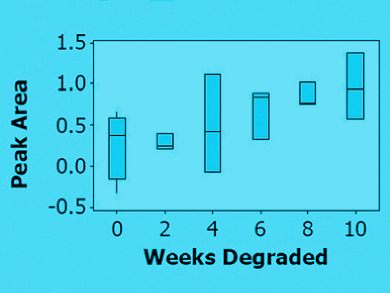Monitoring Museum Artifacts
Breath analysis in disease diagnostics is a promising research field, and the advances in instrumentation allow the accurate detection of metabolites. Not only the health status of patients, but also the preservation status of museum artifacts could be monitored. Katherine Curran, Matija Strlič, University College London, UK, and colleagues have investigated emissions of volatile organic compounds from plastics-based art objects and provided a first calibration scheme for polymer degradation in a museum environment.
Everyone is familiar with the detection of volatile organic compounds (VOCs). They can be sensed by the nose and tongue, indicating several aspects of the current state of the emitting system—be it the mown grass in the backyard, the level of maturation of cheese, or decay in fish, or even if a patient suffers from diabetes.
However, the emittance of marker chemicals is not restricted to living systems. Volatile degradation products can also be detected for polymers. Since the beginning of the 20th century, many plastics-based objects have found their way into museums, and conservators and heritage scientists are highly interested in assessing their preservation status, ideally without taking physical samples from the objects.
Detecting Polymer Decay
The researchers have introduced a noninvasive gas-chromatography/mass-spectrometry detection system for marker VOCs emitted by several polymers contained in modern museum artifacts. They also developed a rough calibration system to classify three real objects from the Tate into two distinct decay states.
Every polymer has its own signature of degradation products. For example, degrading cellulose acetate emits acetic acid, which can be quantified over time. To assess the quality and quantity of VOCs from polymers, the scientists chose chemical markers for polymers common in museum artifacts such as cellulose-based polymers, polyurethane foam, poly(vinyl chloride), polystyrene, and polyethylene. As reference degradation states, they used modern polymeric samples exposed to heat for up to 10 weeks. The aim was to find characteristic VOC patterns: “The VOCs detected provide an insight into the composition and ongoing chemical degradation processes of the objects studied,” the team remarked.
Based on the detected VOCs, a rough classification scheme as “early stage” and “advanced degradation state” could be established for the different polymers—and tested for real museum objects based on these materials. For two cellulose-based objects from the Tate made in the 1920s and 1930s, the scientists reported a low degradation state, but one made in 1923–1924 was found in a more advanced state of decay. While this might be a matter of concern for the conservators, the researchers think of expanding their analysis: A calibration scheme based on naturally aged samples would help reduce the current limitations, they argue.
- Classifying Degraded Modern Polymeric Museum Artefacts by Their Smell,
Katherine Curran, Mark Underhill, Josep Grau-Bové, Tom Fearn, Lorraine T. Gibson, Matija Strlič,
Angew. Chem. Int. Ed. 2018.
https://doi.org/10.1002/anie.201712278


